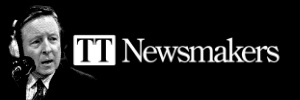Staff Reporter
Pennsylvania Turnpike Commission Approves Another Toll Hike

[Stay on top of transportation news: Get TTNews in your inbox.]
In keeping with a decadeslong pattern, the Pennsylvania Turnpike Commission has approved a toll rate increase for 2021.
The 6% hike approved July 21 applies to E-ZPass rates systemwide. The bulk of the 360-mile turnpike runs east-west along Interstate 76, spanning from Philadelphia to the Ohio state line. The toll road also has two large offshoots, one north of Philadelphia along I-476 and the other south of Pittsburgh along state Route 43.
Under current rates, a Class 8 truck traveling the entire east-west length of the turnpike would be tolled $422.60 using the Pennsylvania Turnpike’s Toll By Plate system and $293 using E-ZPass. The Toll By Plate system, geared toward non-E-ZPass users, relies on cameras to capture a vehicle’s license plate. An invoice is subsequently mailed to the owner of the vehicle.
It’s just going to drive more truck traffic off the turnpike.
Joe Butzer, Pennsylvania Motor Truck Association
The toll increase is scheduled to take effect Jan. 3. The increase provides the revenue needed to keep up with annual contributions outlined in Act 44 of 2007, a funding law that required the commission to provide the Pennsylvania Department of Transportation with $450 million a year for highways, bridges and public transit.
Pennsylvania Turnpike Commission spokesman Garth Hess said the commission has increased tolls annually since 2009 as a way to meet the funding obligations required under Act 44.
“The primary driver of the annual toll rate increases continues to be our quarterly transit payments to PennDOT and the resulting debt service that comes along with the legislatively mandated funding obligation,” Pennsylvania Turnpike Commission CEO Mark Compton said. “As a result, the Pennsylvania Turnpike has delivered almost $7 billion in funding to PennDOT in the last decade, primarily to support mass transit operations in Philadelphia and Pittsburgh.”

Transport Topics introduces its newest digital interview series, Newsmakers, aimed at helping leaders in trucking and freight transportation navigate turbulent times. Audience members will gain access to the industry's leading expert in their particular field and the thoughtful moderation of a Transport Topics journalist. Our second episode — "The Evolution of Electric Trucks" — featuring Nikola founder and executive chairman Trevor Milton, will air live on July 28 at noon EDT. Registration is free but advance signup is required. Sign up today.
Joe Butzer, interim president of the Pennsylvania Motor Truck Association, acknowledged the toll hike isn’t a surprise. He did note, however, it is a financial burden for the trucking industry, which is unable to pass the cost along to consumers. He suggested the increase may prompt fleets to divert from the turnpike when possible to avoid toll costs.
“It’s just going to drive more truck traffic off the turnpike,” Butzer told Transport Topics. “It’s going to take more time, but you look at the time it’s going to take versus the cost of the turnpike and then you make a decision as to whether you want to go on the turnpike or go on another route.”
The Pennsylvania Turnpike Commission also approved new Toll By Plate rates at toll facilities that converted to all-electronic tolling in June. The new rates, also scheduled to take effect Jan. 3, include an average 45% increase over the 2020 cash rate. The rates were set as part of a systemwide move from cash collection at toll facilities. The new rate will not apply at six toll locations that had converted to the all-electronic method before 2020.
“The new Toll By Plate rate reflects the higher costs the commission incurs to process the toll and collect payment, a pricing approach used by tolling agencies across the nation to cover the costs of administering [all-electronic tolling] systems,” Compton said. “This balanced approach allows us to maintain a lower rate for those choosing a payment method that is less costly to manage, while those who choose a pricier payment option absorb those costs.”
Want more news? Listen to today's daily briefing:
Subscribe: Apple Podcasts | Spotify | Amazon Alexa | Google Assistant | More

